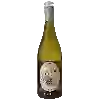
Winery Paul Mas1892
This wine is a blend of 4 varietals which are the Alicante Bouschet, the Carignan, the Cinsault and the Grenache noir.
In the mouth this red wine is a powerful with a nice balance between acidity and tannins.
This wine generally goes well with beef, veal or pasta.
Taste structure of the 1892 from the Winery Paul Mas
Light | Bold | |
Smooth | Tannic | |
Dry | Sweet | |
Soft | Acidic |
In the mouth the 1892 of Winery Paul Mas in the region of Languedoc-Roussillon is a powerful with a nice balance between acidity and tannins.
Wine flavors and olphactive analysis
On the nose the 1892 of Winery Paul Mas in the region of Languedoc-Roussillon often reveals types of flavors of cherry, non oak or oak and sometimes also flavors of red fruit, black fruit.
Food and wine pairings with 1892
Pairings that work perfectly with 1892
Original food and wine pairings with 1892
The 1892 of Winery Paul Mas matches generally quite well with dishes of beef, veal or pasta such as recipes of autumn leaves, roast pork with prunes or pasta with tuna and tomato sauce.
Details and technical informations about Winery Paul Mas's 1892.
Discover the grape variety: Alicante Bouschet
It is a crossbreed made in 1855 by Louis and Henri Bouschet from an intraspecific crossing between Grenache noir and Petit Bouschet. The Alicante Henri Bouschet is less and less multiplied, registered however in the Official Catalogue of the varieties of vine of wine grapes list A.
Last vintages of this wine
The best vintages of 1892 from Winery Paul Mas are 2017, 2019, 0, 2020 and 2018.
Informations about the Winery Paul Mas
The Winery Paul Mas is one of of the world's great estates. It offers 133 wines for sale in the of Languedoc-Roussillon to come and discover on site or to buy online.
The wine region of Languedoc-Roussillon
Languedoc (formerly Coteaux du Languedoc) is a key appellation used in the Languedoc-Roussillon wine region of southern France. It covers Dry table wines of all three colors (red, white and rosé) from the entire region, but leaves Sweet and Sparkling wines to other more specialized appellations. About 75% of all Languedoc wines are red, with the remaining 25% split roughly down the middle between whites and rosés. The appellation covers most of the Languedoc region and almost a third of all the vineyards in France.
The word of the wine: Residual sugars
Sugars not transformed into alcohol and naturally present in the wine. The perception of residual sugars is conditioned by the acidity of the wine. The more acidic the wine is, the less sweet it will seem, given the same amount of sugar.














